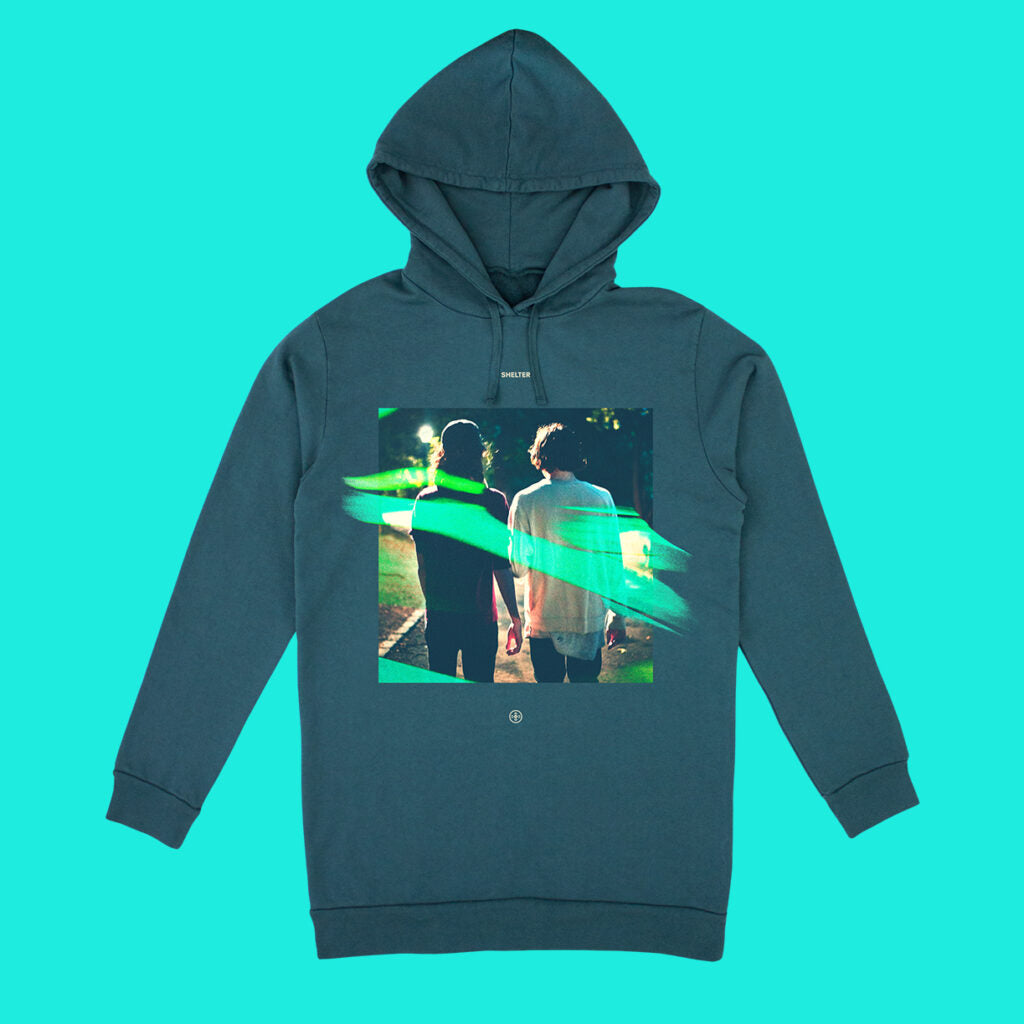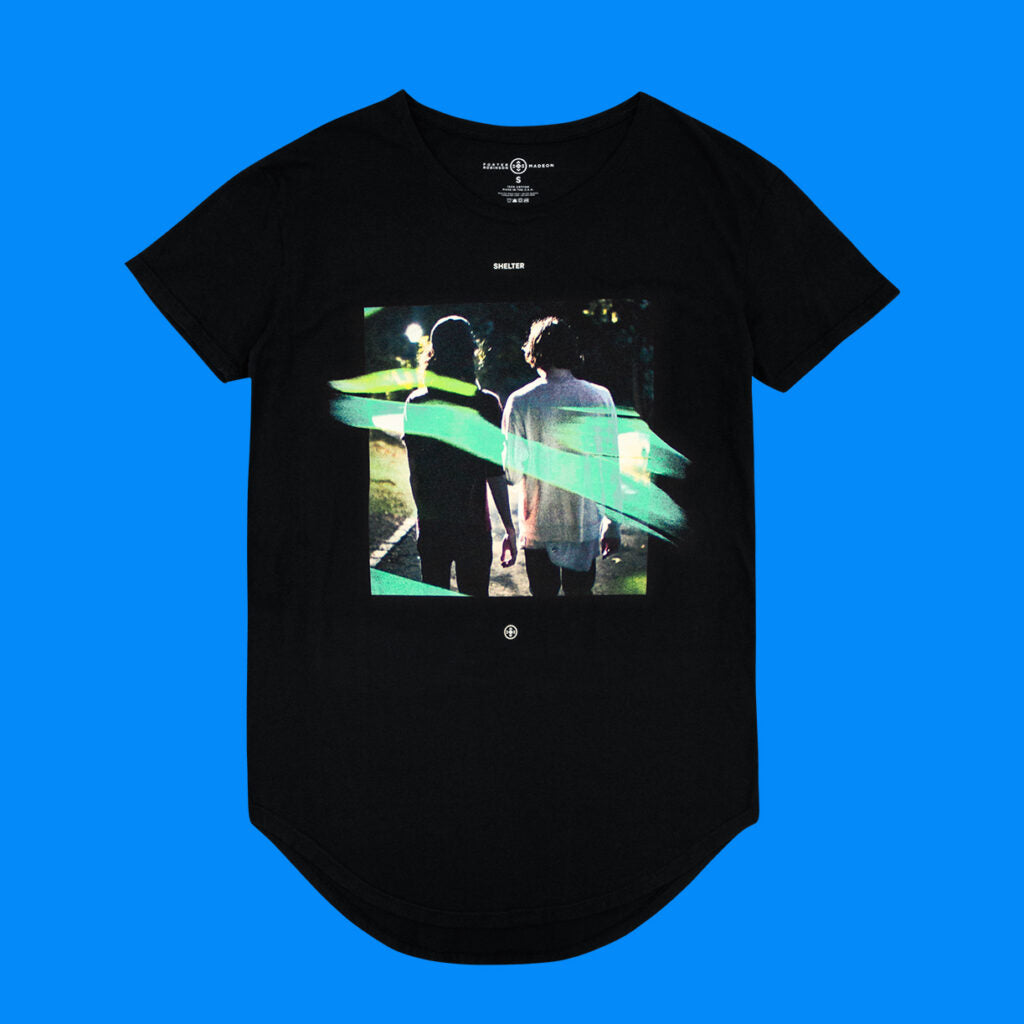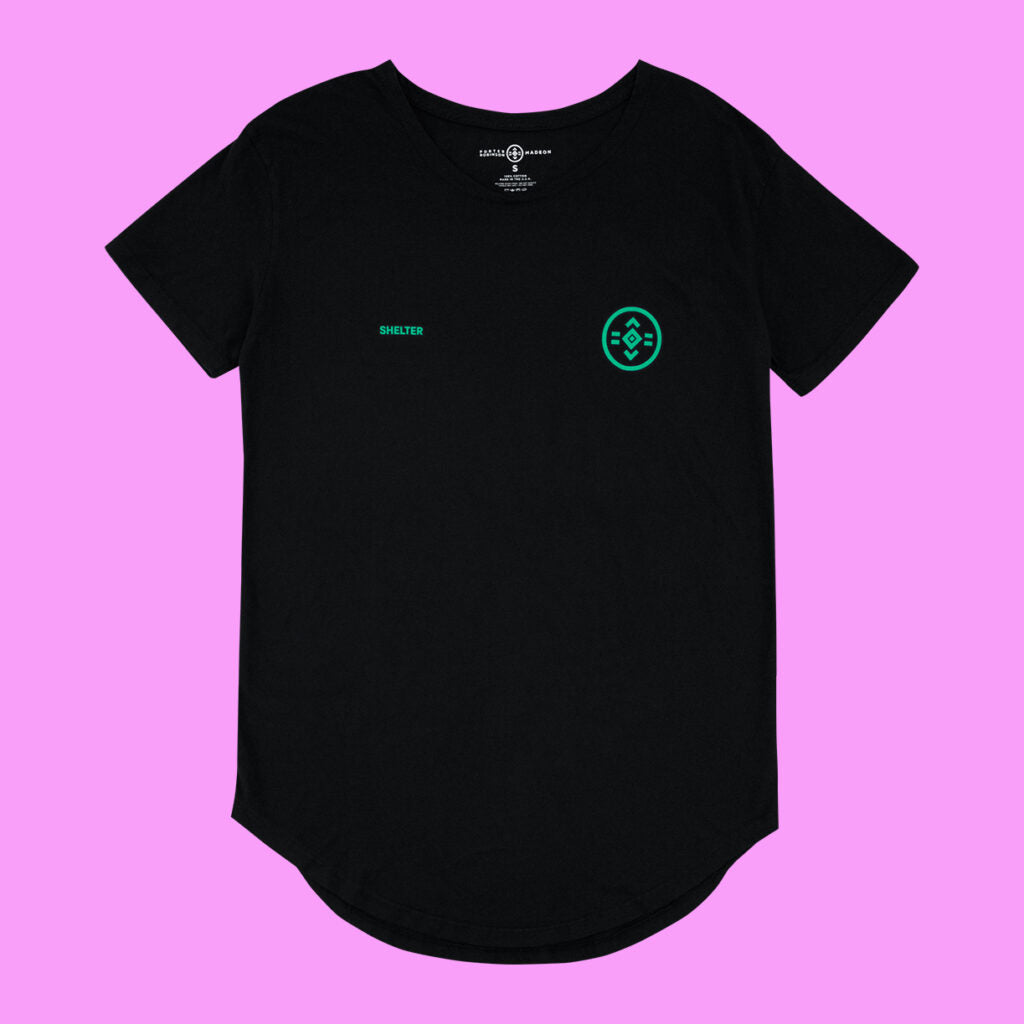The Hail Mary
Porter Robinson and the Incredible Ask

“I want something that doesn’t exist. Something that’s never been done before.”
It shouldn’t have come as a surprise. Porter Robinson is known for the eccentric, for being a nonconformist. It’s what makes him stand out; it’s why fans love him. He wanted a garment that was made just like his music. So you can bet he wasn’t talking about something as simple as “make me a blue t-shirt” or “I want a thin hoodie.”
The ask was as precise as mastering a track and just as robust—he had specifications for the fit, the type and weave of the material, the lay of the shoulders, the kind of collar, the length of the hood and sleeves, the hem, the stitching—all against a custom-dyed Pantone specific color. No pattern to draw from other than a favorite tee of his. All on a tight schedule with no room for error. Merch that required constant, personalized communication, a ton of moving parts and partners, and close supervision over every part of the process.
The first merch company gave him a straight up “Hell no.” It was a crazy idea. Other merch companies didn’t seem to share his vision either. It looked like a pipe dream.
Finally, somebody said, “You should call Merchtable.” It’s great to know that when people think of creating the impossible, we’re the answer.
If we were going to get this garment made on time and well, we had a tsunami of work cut out for us.
immediate thought was, “Hell yes. We’re going to pull this off.” Not only that, but just like with everything else we do, we planned on knocking it out of the arena. That same day, after pounding out preliminary research and calling our partners to be sure we had the information and logistical support we’d need for the project, I sent a contract to Porter’s team.
If we were going to get this garment made on time and well, we had a tsunami of work cut out for us. But we’d made dozens of custom merch pieces before this. We knew the ins and outs, the nitty and the gritty, and all the potential pitfalls. We were ready, and we were psyched.
I booked a flight to LA for the next day. We had to make instant decisions on everything and handle each piece in person to avoid even slight delays. There was no leaving stuff up to chance or letting someone else make the calls. Every aspect of the garment, from the collar thickness to the overly long hood, had to be designed and created then inspected and approved by someone on our team. We were riding a bicycle across a tightrope called “done right the first time, cause there’s no safety net.”
After putting everything together, we overnighted a prototype to Porter. He loved it. After sign-off, everything moved to cut-and-sew production. Then, the shirts had to be shipped to another vendor for screen printing. We were working with neon colors that are hard to replicate. I remember pulling up proofs on my phone in the middle of the night during a Boy Scout camping trip. Phone service was crap, and I ended up wandering the hills in the dark to do the press checks.
The first proof didn’t pass muster.
As a band, we’d been screwed plenty of times by merch companies, so we refuse to send out less than quality products. The promise of “on time,” never means “effed up.” I pulled the plug on the first print vendor and overnighted blanks to a second. They gave us the quality we demanded, so we had them complete the entire first run.
There were 89 cases of merch slated to hit Atlanta the day before the first show. Were we silently screaming that entire last 24 hours? No, we’re professionals. But also, yes. You’d think we would have breathed a little easier since production was over. Right? Well, it ain’t over till it’s over, baby.
This is where being in the biz gave us the winning edge. We’d had our own merch deliveries rejected in the past because most venues don’t receive shipments before 5 p.m., when they open. After all our hard work, there was no way I was leaving delivery up to chance. I’d sooner light the cases on fire and record an entire album of nails scraping a chalkboard.
There was a hotel across the street from the venue. So I booked a room and had all 89 cases delivered directly to me. Then, once the venue was open, I hand-delivered them all.
The next morning, before returning home, I looked up from my breakfast to see a kid wearing one of Porter’s shirts. I didn’t know whether to fist pump the air repeatedly or throw my plate across the room. That’s how good it felt.
The final piece of this smoking-hot pie: We didn’t have much sales data for order projection. You know why that’s a problem—who cares how awesome merch is if you’re not selling it? And who cares if we can produce awesome merch for artists, but we aren’t making them good money?
Everything has to be right, not just some things.
Using an internal formula based on our more than two decades of experience merged with stats from four prior shows, we calculated projections that were accurate within 1% of total sales. One percent. If that isn’t enough to send shivers down your spine into your wallet, call an ambulance (cause you might be dead).
Porter’s garment made good press in a big way. People weren’t just talking about his music; they were hyped about the new, weird shirt thing in his merch offering. He extended his tour, and we did a re-press with huge smiles on our faces. It was like a musical fairytale. Except the magic was really just a cool idea followed by a bunch of hard work and passion. And the music was, of course, all him.
When it comes to forward-thinking artists, there is no middle ground. Art is all or nothing. Especially if it’s bizarre and fabulous and inventive. So we meet incredible artists with nothing less than extraordinary. We grab the challenges that nobody else wants to take on.
Because creating is life.
So come at us. Impossible? Please.


